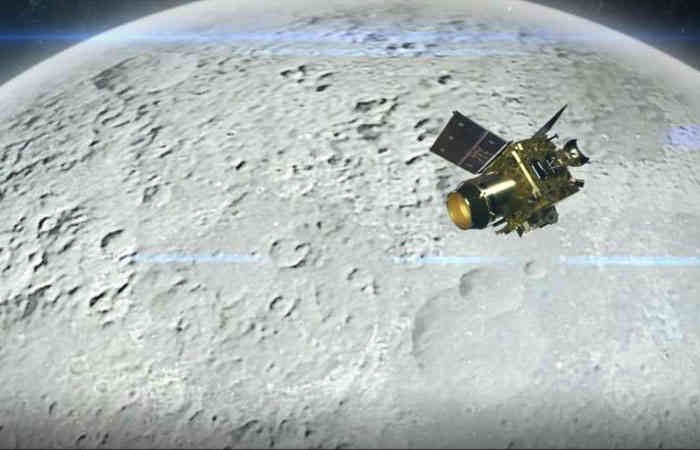
New delhi date. September 21, 2019, Saturday
Chandrayaan-2's campaign is not a complete failure, as Chandrayaan has three parts - one Vikram Lander, the other Pragyaan and the third is Orbiter. In a statement issued by ISRO, the Chandrayaan-2 orbiter was working in the right direction and well at its pace. ISRO hopes that it will work properly in the coming days as well.
According to the information received, ISRO has stated that it is expected that Chandrayaan-2's orbiter can still work for the next seven to eight years. That is, Chandrayaan-2 has also proved to be a success, as the orbiter will continue to provide all kinds of information to the country for the next seven years. In particular, it will also send pictures of the momentum and the direction it is moving and will continue for seven years, which may be helpful to ISRO and other scientists as well.
ISRO chairman Siwan had given this information, saying he had also tried to find out what really happened to Lander Vikram. However, the current Orbiter is working well in the right direction with eight instruments.
Some pics are also sent to us by this orbiter which is really amazing. Normally the orbiter is only working for a year or two, though this orbiter is designed in such a way that it will provide various information to the country for the next seven years.
Sivan also said that efforts have been made to get specific information about what happened to Lander Vikram and a committee has been constituted to investigate the various aspects.
We fully hope that Vikram Lander can be contacted in the coming days. He also said that ISRO is planning to send another lunar mission in 2020. However, the project is under consideration. However, once Chandrayaan is sent back, it will be considered as India's third moon mission.
ISRO chairman Siwan announced that India will be successful in sending humans to the moon in 2021. ISRO will make all sorts of preparations for this by December 2021. At present, work has been started on it.
Comments
Post a Comment
What you think about this NEWS please post your valuable comments on this article, we will immediately publish your comments on this page